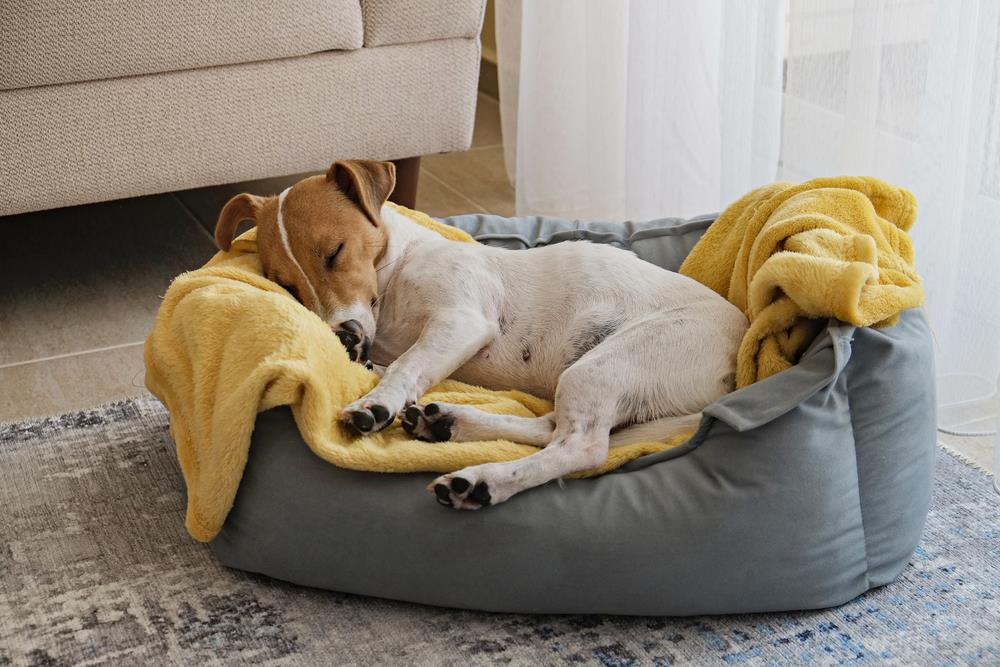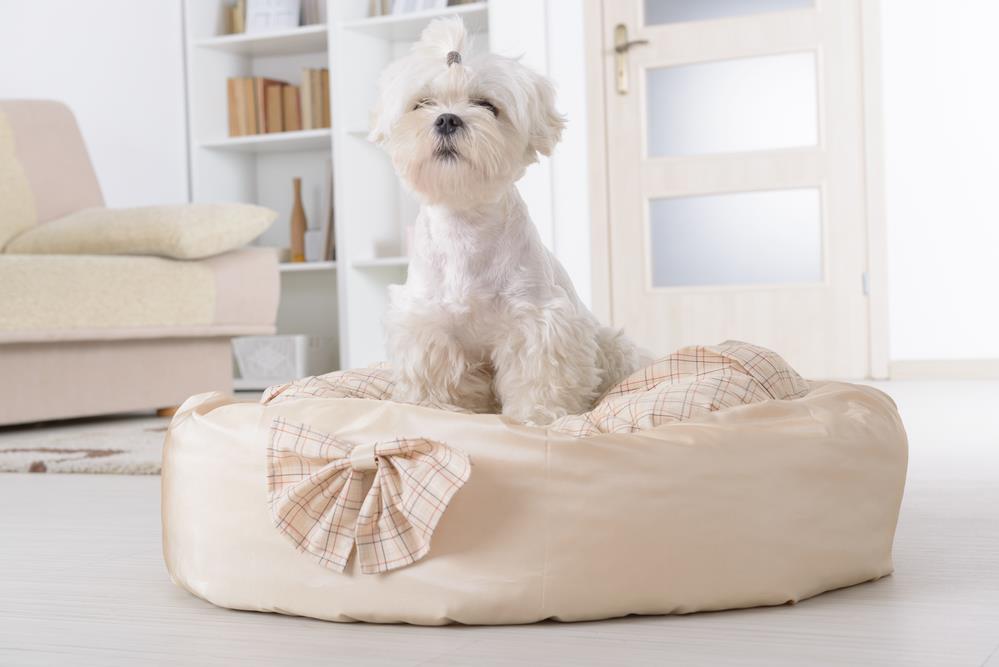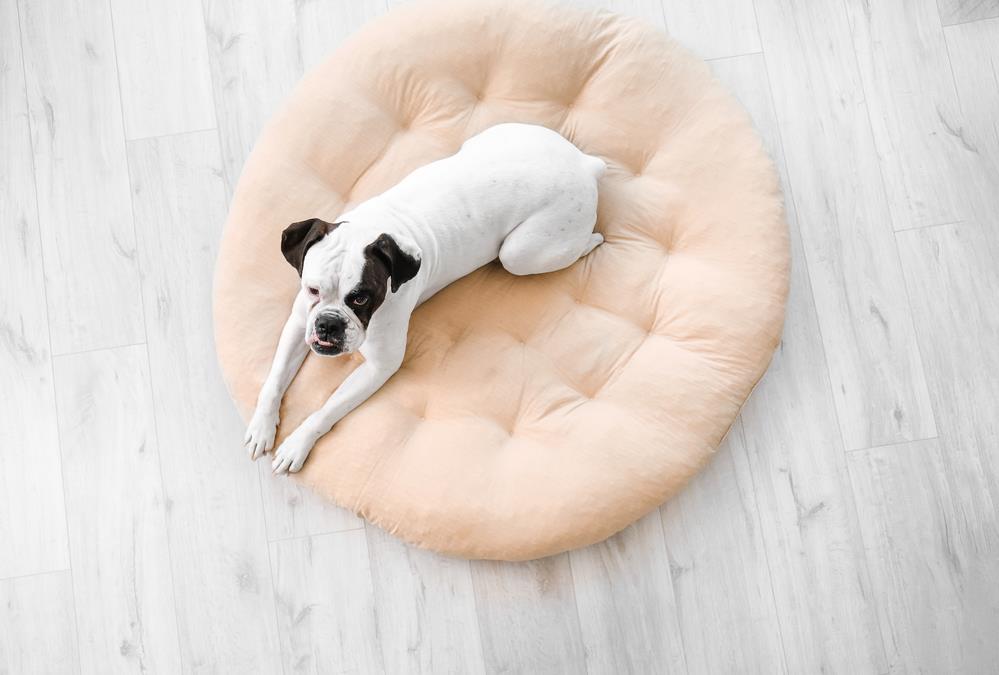Understanding Your Pet’s Needs
Your pet’s sleeping habits can offer critical insights into their needs, and observing these tendencies is crucial. It’s not just about comfort; their sleep patterns can also indicate their overall health.

The Impact of Breed on Sleep
The breed of your pet can significantly influence its sleep requirements. For example, larger breeds often require more sleep than smaller ones. Choosing a bed that caters to these specific sleep habits is vital for your pet’s wellbeing.
The Choice of the Right Bed for Your Pet
The choice of the right bed for your pet should also be determined by factors such as age, health, and size. For instance, older pets or those with joint issues might need orthopaedic beds.
Understanding Different Types of Pet Beds and Their Unique Benefits
The choices for pet beds are as varied as the pets themselves. Let’s delve into the popular styles such as standard, orthopedic, heated, and covered beds, each with its own benefits and drawbacks.
Standard Pet Beds
Standard pet beds, akin to pillows or cushions, are most suitable for smaller breeds or pets with no special needs. They offer basic comfort but little support.

Orthopedic Pet Beds
Orthopedic beds, designed with memory foam, are ideal for older pets or those with joint issues. They offer superior support and can help alleviate pain. However, they may be more expensive.
Heated Pet Beds
Heated beds can keep your pet warm during colder months. They are beneficial for older pets who need help maintaining body temperature. But, they will increase energy usage, and not all pets enjoy the additional warmth.
Covered Pet Beds
Covered or enclosed beds offer a sense of security for nervous pets or those who enjoy burrowing. But, they may not provide enough ventilation during warmer weather.

Understanding your pet’s needs and preferences is key in selecting the right bed. It’s a small investment for their comfort and wellbeing.
Importance of Selecting the Correct Size Bed for Your Pet
When it comes to the comfort and wellbeing of your pet, selecting the right-sized bed is paramount. Not unlike humans, pets require sufficient space to stretch and relax, and a bed that’s too small can lead to discomfort and even health problems.
Measuring Your Pet for a Bed: A Step-by-Step Guide
- Ensure your pet is in a relaxed, natural position.
- Measure from the tip of the nose to the base of the tail – this is the length.
- Measure from the ground to the highest point of the shoulder – this is the height.
- Add a few extra centimetres for comfort.
Considering the Placement of Your Pet’s Bed
Another crucial factor is the space where the bed will be placed. The bed should fit comfortably without obstructing pathways or being too exposed. If your pet prefers privacy, consider a secluded spot.

Why the Materials Matter in Your Pet’s Bed
The materials used in a pet bed’s construction play a significant role in your pet’s comfort and health. The right choice of materials ensures durability while providing maximum comfort. For instance, a bed made of high-density memory foam will offer excellent support for pets, particularly older ones with joint problems. In contrast, beds made from substandard materials can lead to discomfort and potential health issues.
The Importance of Adequate Padding
Padding is another critical factor to consider. It provides additional comfort, ensuring your pet is cushioned from the hard floor. It can also help relieve pressure on your pet’s joints. However, the level of padding required may depend on your pet’s size, weight, and age.
Choosing Hypoallergenic Materials
Pets with sensitive skin or allergies require special attention when choosing a bed. Hypoallergenic materials can help to prevent skin irritations and allergic reactions. These materials are designed to resist common allergens like dust mites and mould, providing a safe and comfortable sleeping environment.
Durability and Maintenance: Key Factors in Choosing a Pet Bed
When choosing a pet bed, durability is an essential consideration, particularly for pets that chew or scratch. A durable bed will withstand these habits, providing your pet with a comfortable place to rest for years to come. High-quality materials and robust construction are indicative of a bed’s durability.
Another crucial factor is the availability of washable and removable covers. Pets can be messy, and easy-to-clean covers ensure that maintaining hygiene is effortless. This feature not only simplifies cleaning but also extends the life of the bed.
Evaluating Stitching and Zippers
Inspection of the pet bed’s stitching and zippers can provide insights into its overall quality. Loose or fraying stitches, or zippers that don’t close smoothly, may indicate inferior craftsmanship.
Safety Concerns: Addressing Potential Risks
When selecting a bed for your pet, it’s essential to scrutinise certain features that may pose risks. Loose threads, small detachable parts, and sharp zippers could cause injuries or accidental ingestion.RSPCA recommends regular checks for wear and tear to ensure the safety of your pet.
Non-Toxic Materials and Safe Design
Materials used in pet beds should be non-toxic and hypoallergenic. Many pets, particularly puppies, are prone to chewing their beds, and ingestion of harmful chemicals can lead to serious health complications. The Australian Government’s ACCC guidelines provide comprehensive information on pet product safety, including beds.
Tips for Pet Bed Safety
- Regularly inspect the bed for wear and tear.
- Choose beds with non-removable, securely attached parts.
- Ensure the bed is appropriately sized for your pet.
- Research product safety standards and reviews before purchase.
Determining the Value of a Pet Bed
When considering the price of a pet bed, it’s crucial to understand that value extends beyond the initial cost. The cheapest option may save you money upfront, but it might not provide the best overall value. RSPCA Australia suggests considering factors such as quality, durability, and your pet’s comfort in your decision-making process.
Finding Balance: Cost, Quality, Durability, and Comfort
Striking a balance between cost, quality, durability, and comfort is key when selecting a pet bed. Opt for a bed that offers excellent quality and durability to ensure it serves your pet for an extended period. It’s essential to consider your pet’s comfort too, as a comfortable pet is a happy pet.
Affordable Yet Quality Pet Beds
- Consider beds with a removable, machine washable cover, which can extend the bed’s lifespan.
- Opt for beds with quality stuffing. Beds with memory foam can provide excellent comfort for pets, even if they’re a bit more expensive.
- Consider online reviews and ratings, as they can provide insights into a bed’s actual performance beyond the manufacturer’s claims.
Remember, an investment in a quality pet bed is an investment in your pet’s health and happiness.
The significance of reviews in informed purchase decisions
It’s essential to recognise the impact reviews play in making informed purchasing decisions. Reviews can provide a wealth of knowledge about a product’s quality, value for money, and overall efficiency. They often feature real-life experiences, making them a valuable tool in your decision-making process.
Finding reliable reviews and what to look for
Look for detailed reviews that discuss the product’s features, durability, and comfort. Reviews that mention the pet’s size, breed or health condition are particularly helpful.
Considering your pet’s individual needs
While popular opinion can guide you, it’s crucial to prioritise your pet’s individual needs. Every animal is unique, and their bed should reflect that. Consider their size, age, health, and breed-specific requirements when choosing a bed.


